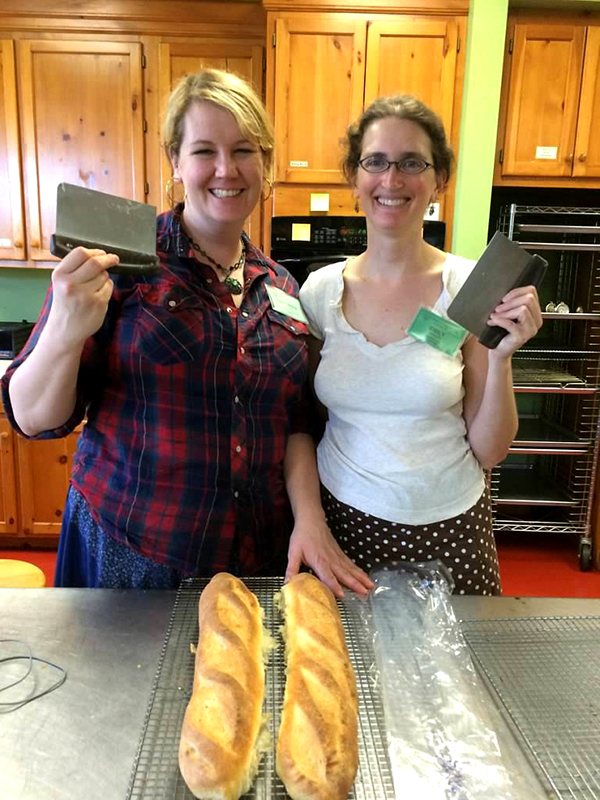
19 Sep Bread Baking with Emily Buehler
I first met Emily my very first week at the Folk School in January of 2011. I was a work/study and she was teaching bread making. That week, snow had dumped onto the campus leaving sheets of white across the fields and a chill in our bones (our main task as work-studies was to clear the paths and walkways). I vividly remember working Monday afternoon outside the cooking studio and Emily appeared at the door to invite us to come in and taste some warm, freshly baked bread. It was delicious!
We found an excuse at the end of every workday to linger outside the cooking studio like little Dickensian orphans waiting to be invited in for a taste. So yes, I am a little biased, as Emily was the kindest bread angel to us that first week. It set up a dangerous precedent that few other cooking teachers lived up to during my work study stint. I sat down with Emily the last time she was teaching at the Folk School to find out a bit more about “The Science of Bread.”
CP: You teach quite regularly at the Folk School. When was your first class? How did you find the Folk School?
In the spring of 2006, I took a four-day bike trip touring independent bookstores to promote my new book Bread Science. I started in Hendersonville and rode through Hayesville and Murphy to Robbinsville. I remember seeing a sign for the Folk School and thinking it looked interesting, but I did not want to bike the extra miles off the main road to check it out. One of my stops was the Phillips & Lloyd Book Shop on the square in Hayesville. In 2007, my friend Amy was in the work/study program and she told Nanette Davidson about my book. Nanette went to the bookstore in Hayesville and they just happened to have one of the copies I had sold them the year before. I started teaching at the Folk School in October 2008.
CP: Both your book and your class title refer to the “science” behind bread making. Can you elaborate more on what that means?
I studied chemistry in the graduate program at the University of North Carolina at Chapel Hill. When I graduated I got a job at a bakery in a local food co-op called Weaver Street Market. The nearby art school was interested in bread making classes and I offered to be the teacher. Teaching the class led to me writing a manual for the techniques and recipes we learned. Considering my background, it was natural for me to connect chemistry with the baking. Science is not so different from baking really; you get the basic formula down and start to experiment.
CP: What kind of experiments do you do?
In my class we do a lot of comparative batches to see what will happen to dough under different conditions. For example, we will see what will happen if you leave the same dough out overnight or if you cook it the same day. We make lots of dough, so that there is plenty to experiment with. The ingredients are inexpensive, and everyone gets more practice at kneading. You learn a lot about fine-tuning the bread making process and you also end up with some great bread. We try different baking methods, like on a pizza stone versus on a pan, to see which produces better size and color.
CP: You are working on a second book. What are you writing about?
The next book is a memoir of a cross-country bicycle trip I did in the summer of 2003. I spent 3 months with my friend Mary traveling from Cape May, New Jersey to Oceanside, Oregon. Most of the photos in Science of Bread are taken from this trip. My hand model from chapter 6 is my bike partner Mary.
CP: What are essential tools for bread making that a novice baker might not think of?
A pizza stone preheated with the oven to keep temperatures toasty.
A bench scraper to get the sticky dough off the counter while you are kneading.
A large tupperware container makes a great proofing box when your dough is rising.
CP: How do you like to eat your bread? Do you have any favorite spreads or toppings?
Good old butter and cheese are my favorites!
I do love eating rosemary focaccia with pear & blue cheese.
CP: What are ways that you recommend storing freshly baked bread?
Storing crusty bread in a paper bag keeps it crusty, but it will dry out and harden quickly. You can always store bread in a plastic bag to help it retain moisture and then re-crisp it in the oven – wrap it in tinfoil and bake for 10 minutes at 200 degrees, then eat it right away. Freezing is the way to go for longer storage. I recommend slicing it before you freeze it so you can defrost however much you need for a serving.
CP: How much flour do you use in your class at the Folk School? Do you have a brand preference?
We use about 150 lbs of flour during a weeklong class. I prefer baking with Lindley Mills flour. They are located in Cane Creek in Graham, North Carolina and have been there since 1755. For the past 35 years the mill has been grinding organically grown grain and is operated by ninth-generation Lindleys. They are looking to use organic NC wheat as it becomes available. The mill is also the site of the Battle of Lindley Mill during the Revolutionary War.
—-
To find out more information about Emily and her two books please visit Two Blue Books.
Emily teaches once or twice a year. Check our Cooking schedule for more info





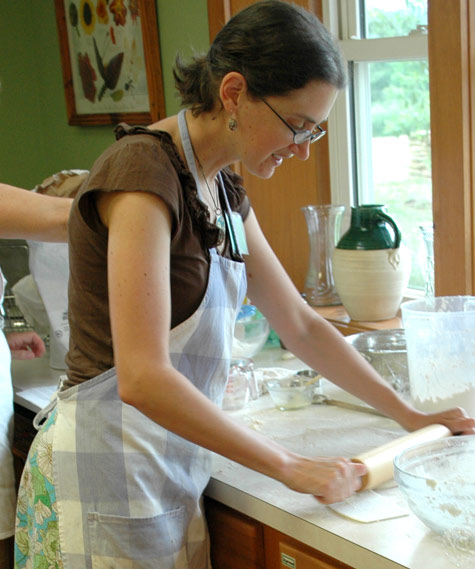
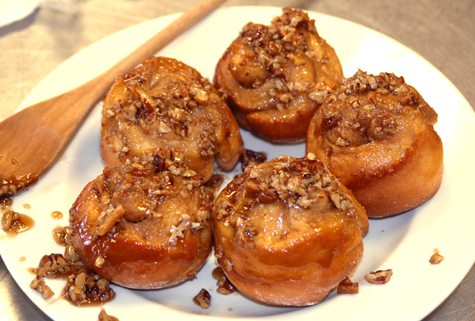
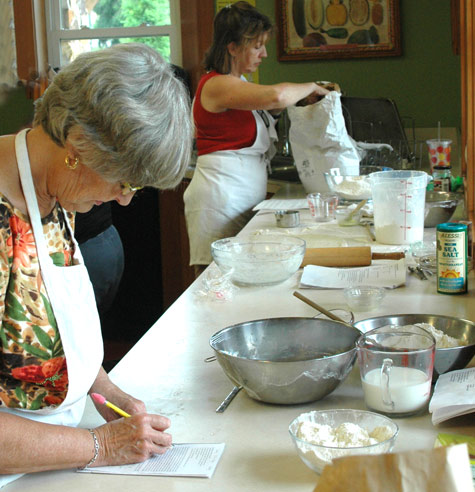
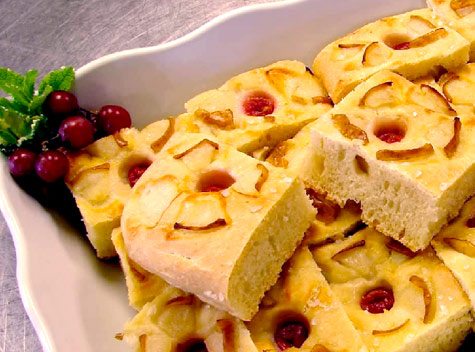
No Comments